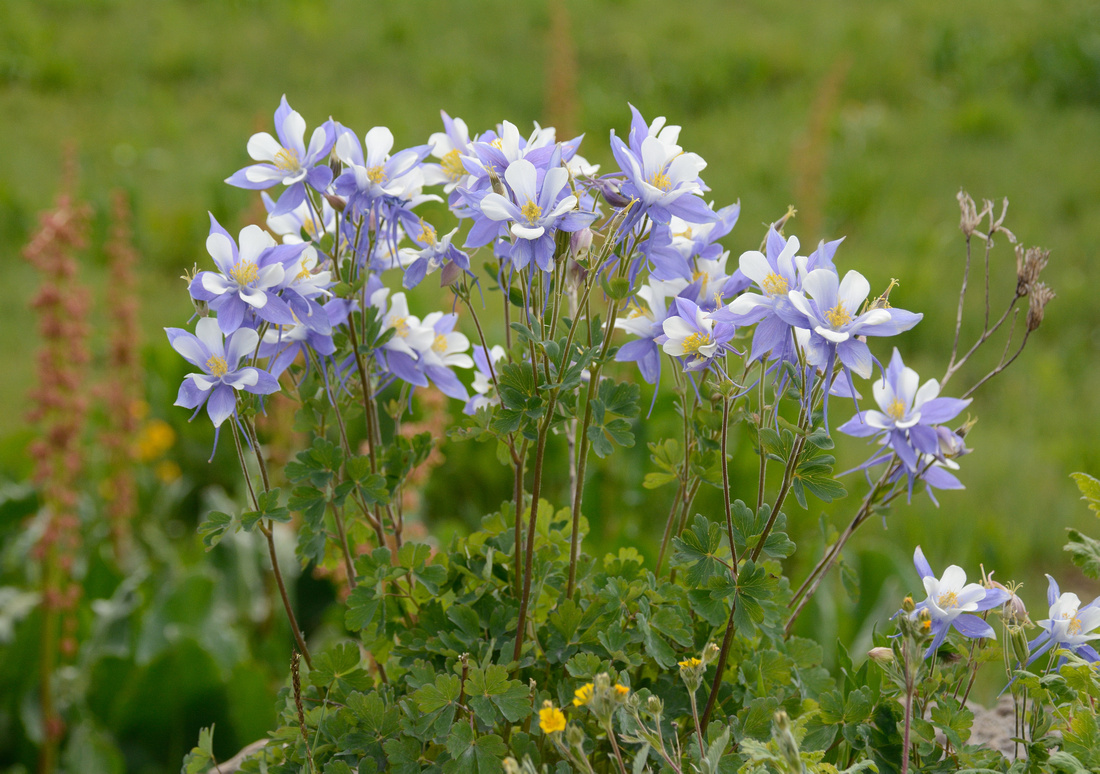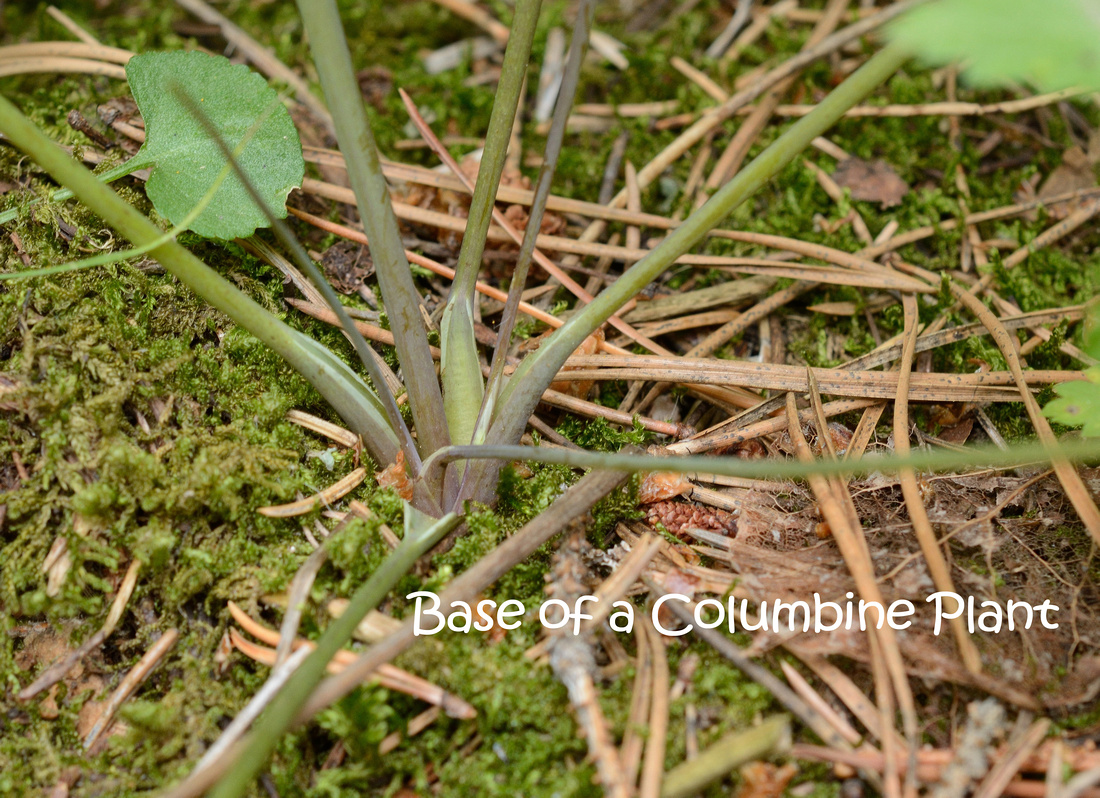Stem vs. stalk: Beyond that pretty flower face


The question came up when I was talking to a friend recently about Columbines (Aquilegia coerulea). We were trying to sort out the relationship between the leaves and the flower. She hadn’t put the two together before.
“Aren’t those two different plants?” she wondered.
It’s true the basal leaves, which are lobed, don’t look related to the trio of oblong leaves nearer the bloom. I couldn’t adequately explain it, so it was time to hit the books.
Turns out it’s a case of stem vs. stalk.
The terms get tossed around somewhat interchangeably but with Columbines it helps to understand the difference.
“In a strict botanical sense, a leafless stalk of a flower is not a stem. Stems bear leaves and buds.”(1)
A stalk is a specialized stem and it’s main job is flower support.(2) Indeed, the plant matter holding up the Columbine flower is properly called a stalk. To find the stem, you have to look closer to the ground.
A stalk also can be leaf support (or leaf attachment), in which case it’s called a petiole. (If you want a great example of a leafstalk, consider rhubarb. The edible part of this otherwise poisonous plant is actually the petiole.)(3)
Stems, meanwhile, have a lot more to do than just hold up flowers. The stem carries nutrients and water between the leaves and the roots. Leaves and buds grow from its joints, called nodes. Green stems even produce food for the plant (as in asparagus, for instance). Cacti stems store water.(4)
Of course, if you want a really big, unmistakable example of a stem, consider a tree. The trunk is just a woody stem.
But stems don’t have to stand tall to be stems. The true stem of a Columbine rises only a couple of inches off the ground before branching out to basal leaves and flower stalk, if at all.

 Plants whose stems hug the ground and form mats, as in the case of Sulphur Flower, Phlox or Pussytoes, are said to be caespitose or “stemless.” Besides mats, so-called stemless plants might form cushions or tufts.
Plants whose stems hug the ground and form mats, as in the case of Sulphur Flower, Phlox or Pussytoes, are said to be caespitose or “stemless.” Besides mats, so-called stemless plants might form cushions or tufts.
Stems can even go underground. Rhizomes, corms and tubers are stems that also store food for the plant. Some underground stems make short, conical structures, “from which a crown of leaves arises. These may form a bulb (as in the onion and lily), a head (cabbage, lettuce), or a rosette (dandelion, plantain).”(5)
Just goes to show you, it’s worth going beyond that pretty flower face and taking a good look at stem vs. stalk.
Some other examples of plants with basal leaves and flowers on bare or mostly bare stalks: Shooting Star, Snowball Saxifrage, Spotted Saxifrage. Fairy Slipper bears its flower on a stem with a single basal, “ovate” leaf. For images, visit my gallery.
NOTES:
1 Guide to Rocky Mountain Plants, Ruth Ashton Nelson, revised by Roger L. Williams (1992)
2 Meet the Natives by M. Walter Pesman, revised and expanded by Dan Johnson (2012 edition)
3 http://www.botanicalaccuracy.com/2013/05/the-difference-between-stems-stalks-and.html
4 https://www.britannica.com/science/stem-plant
5 Ibid.